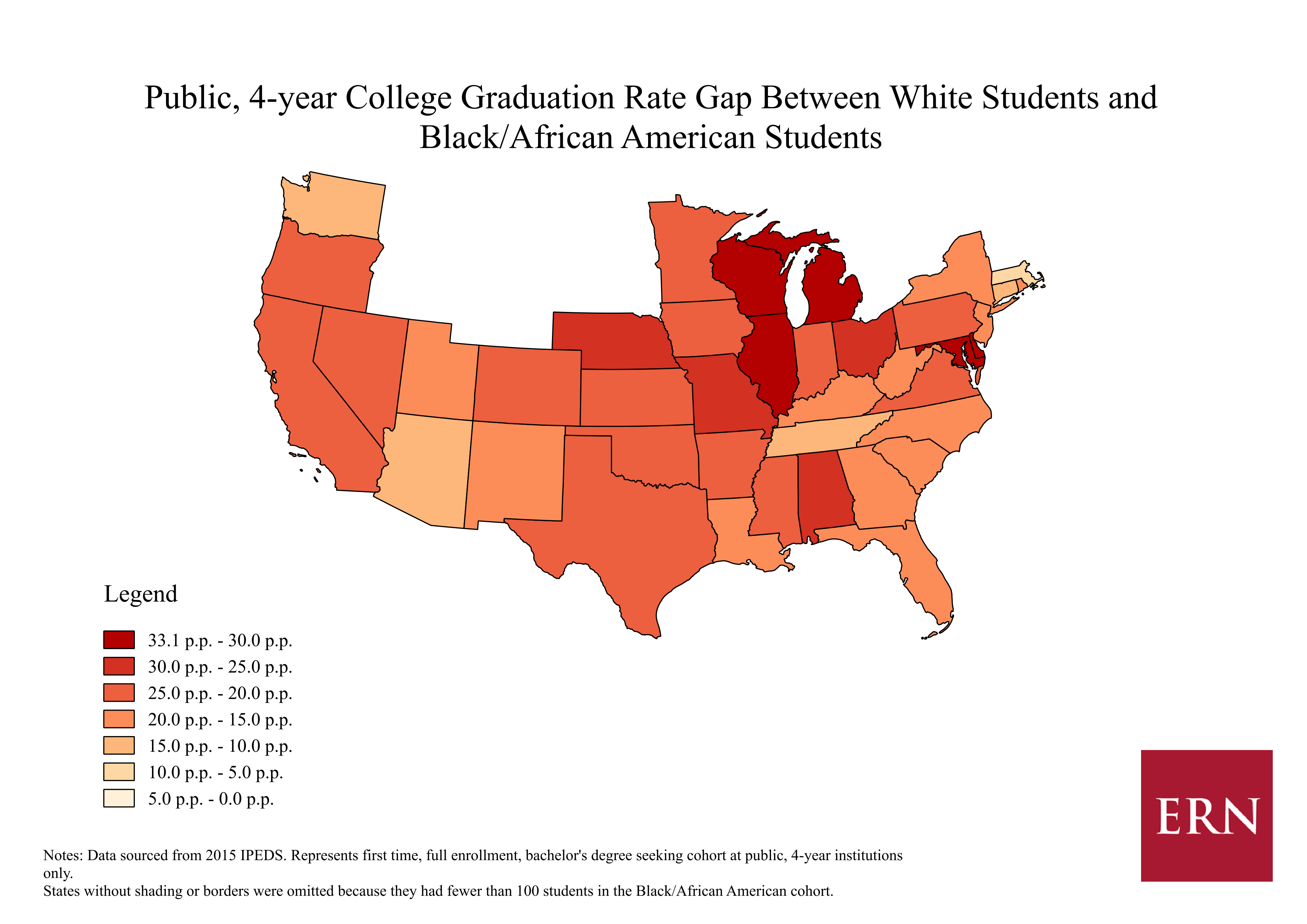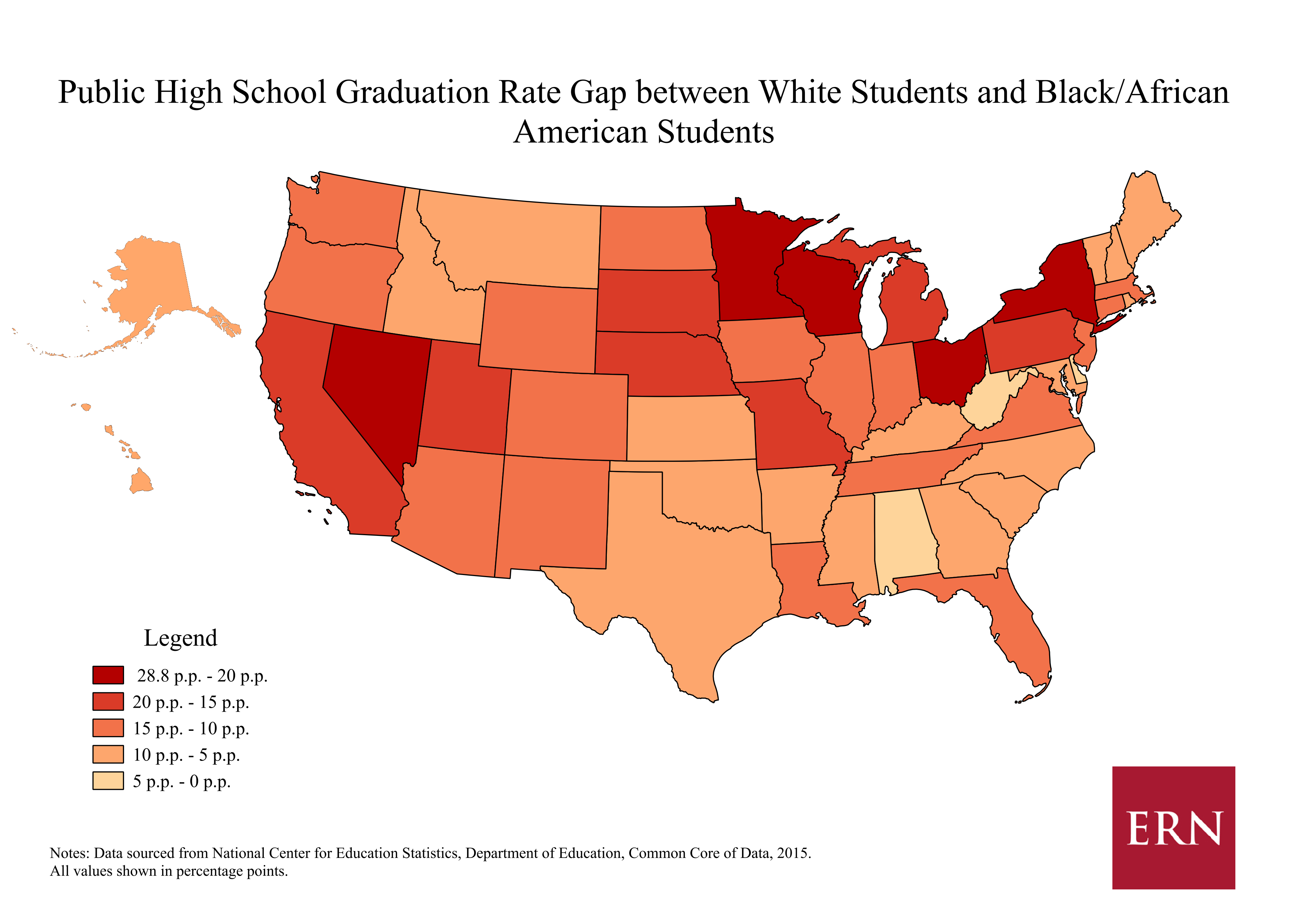The Midwest is home to some of the nation’s finest public institutions of higher education. However, for many black children growing up in these states, degrees from these respected institutions are shockingly out of reach relative to their white peers. Indeed, the graduation gaps between black and white students at both the high school and university level in many Midwestern states are among some of the worst in the nation.
Take Wisconsin, for example. In 2015, the gap between black and white high school graduation rates was nearly 29 percentage points – the largest gap in the country. Put another way, a white public high school student in Wisconsin is nearly 45 percent more likely than a black public high school student to graduate.
What is worse, however, is that once a promising African American high school graduate attends one of Wisconsin’s public 4-year colleges or universities, he or she faces yet another hurdle. At these institutions, white first-time full-enrollment students seeking a Bachelor’s degree have a 62.6 percent 6-year graduation rate, but similar black students only graduate at a rate of 30.3 percent – a rate less than half that of their white peers.
Wisconsin isn’t alone in its region. Check out the Big Ten conference states. As shown in the maps below, Indiana, Nebraska, Illinois, Michigan, and Ohio all represent some of the largest public university graduation rate gaps in the country. Furthermore, when looking at high school graduation gaps, all of these same states rank in the bottom twenty.
By no means are these Midwestern states the only bad actors in either category, but they are remarkable because they have such significant gaps across both secondary and post-secondary education. For instance, Maryland and Delaware have large black-white graduation gaps in their public colleges, but do not have the same kind of gaps in high school graduation rates. New York performs poorly in regard to its high school graduation rate gap, but performs far better in its public universities.
The primary concern is that these particular Midwestern states are failing their black students at the high school level, and then, among those that make it out of high school and go to college, their public 4-year colleges are failing them again. By being weak on both metrics, these states are doubling the damage they are doing to their African American students. And African American students are already facing significant disadvantages as they enter the workforce. Indeed, young African Americans entering the workforce need two additional levels of education to have the same employment prospects as their white counterparts, making it essential for these states to devote time and resources to helping African American students find pathways to graduation.
Luckily, there are some key ways for state education departments and public institutions of higher education to make improvements. At the high school level, states are developing and reviewing their long-term plans under the Every Student Succeeds Act (ESSA). Early assessments are mixed, but some states are on the right path. Louisiana, for example, is giving more weight to student completion, in high school, of 30 or more college credits. It is essential that all states include consideration of disaggregated student outcomes in their ESSA accountability systems. This should include but not be limited to graduation rates, at both the high school and postsecondary level. In fact, one of ESSA’s statutory requirements is that “state academic standards are aligned with entrance requirements for credit-bearing [i.e., not remedial] coursework in the system of public higher education in the state.”
On the higher education front, Midwestern public 4-year universities need to make a concerted effort to boost their black graduation rates. One option would be to take a page out of UNC-Chapel Hill’s book and implement their own versions of the “Carolina Covenant” – a program that combines the financial security of a debt free promise with work-study and additional student supports to dramatically improve the completion rates of low-income African American students. Indeed, since this program’s inception, the on-time graduation rate of African American male students has nearly doubled since the program’s inception.
Honest assessment and forthright action from both states and institutions of higher education can help close the graduation gap, improve the long-term futures of African American students, and in turn, improve our nation.

